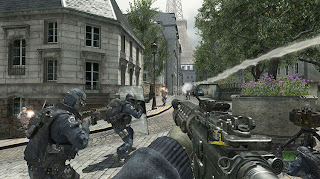It’s been a month and a bit since Call of Duty: Modern Warfare 3 was released, and people have already devoted days and days worth of time to the game – almost more than people have devoted to Skyrim, in some cases. People play the wheels off of Call of Duty games but, more often than not, they don’t bother to stop and think about how it stacks up to the games that came before it.
Well, I decided to take a crack at it. This here is a list of all of the major games of the Call of Duty franchise, ranked from best to worst. If you haven’t had a chance to play them all – from original to the latest release – give it a read: you may be surprised at how things stack up.
 Everything about the first Modern Warfare was the best that the franchise has ever offered. The graphics, the mechanics; everything about the game was brilliant. Even the story, an aspect notorious for being overlooked in the franchise, provided enough intrigue, excitement and coherence to provide a truly entertaining and interesting experience. Modern Warfare was also the first time a separate development team was devoted to work on the multiplayer aspect of the game, which resulted in the birth of such multiplayer staples as the RPG-like Perk system and killstreak rewards, things very uncommon up to that point in the industry.
Everything about the first Modern Warfare was the best that the franchise has ever offered. The graphics, the mechanics; everything about the game was brilliant. Even the story, an aspect notorious for being overlooked in the franchise, provided enough intrigue, excitement and coherence to provide a truly entertaining and interesting experience. Modern Warfare was also the first time a separate development team was devoted to work on the multiplayer aspect of the game, which resulted in the birth of such multiplayer staples as the RPG-like Perk system and killstreak rewards, things very uncommon up to that point in the industry. The second full title in the franchise capitalized on the successes of the original and helped address concerns players had, resulting in quite a large amount of innovation in the gameplay. Gone were the health packs that required backtracking, replaced with regenerative health, the first time it was ever seen in the Call of Duty franchise (and only pre-empted by Halo: Combat Evolved).
The second full title in the franchise capitalized on the successes of the original and helped address concerns players had, resulting in quite a large amount of innovation in the gameplay. Gone were the health packs that required backtracking, replaced with regenerative health, the first time it was ever seen in the Call of Duty franchise (and only pre-empted by Halo: Combat Evolved).– Nick J.













